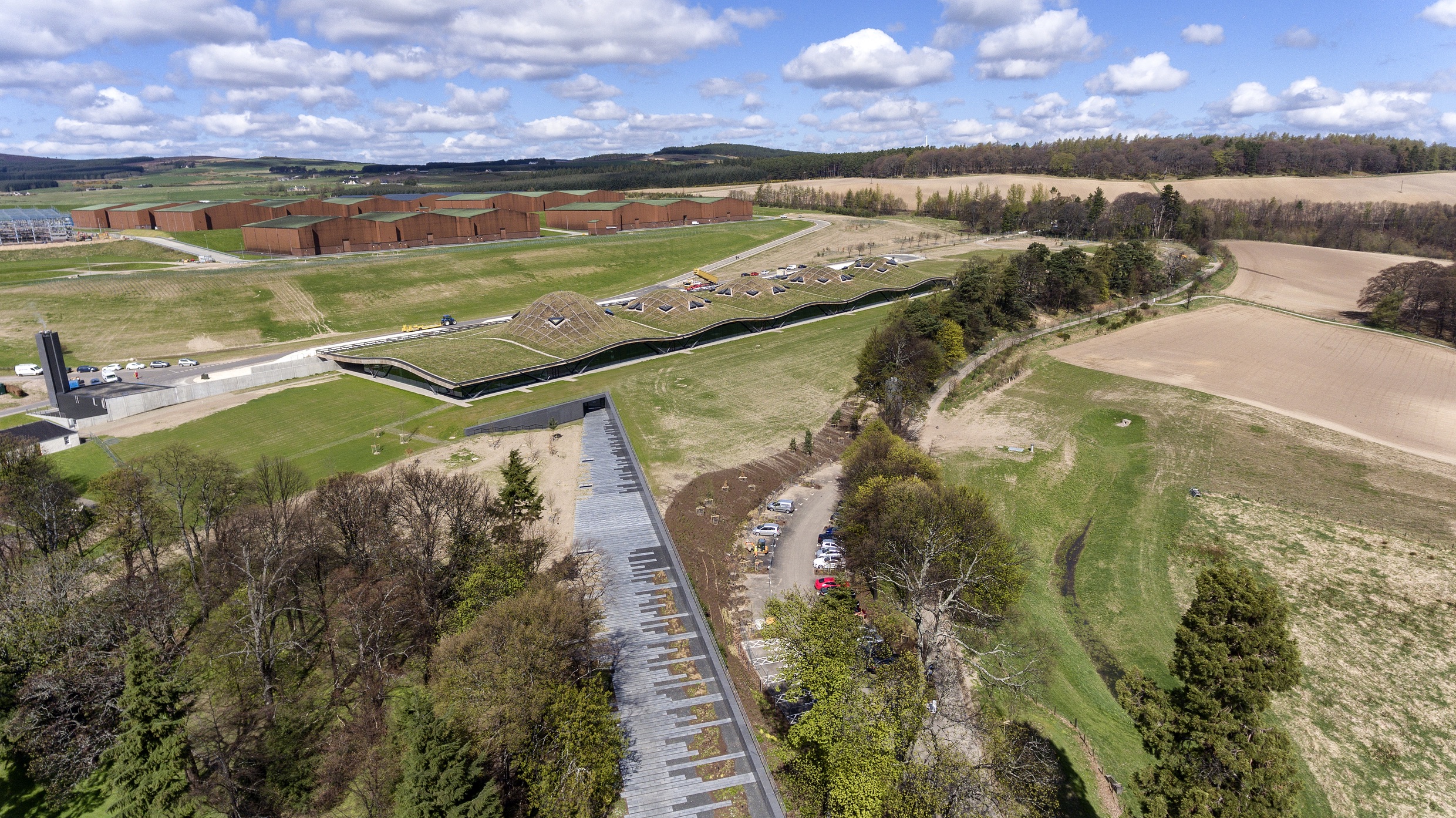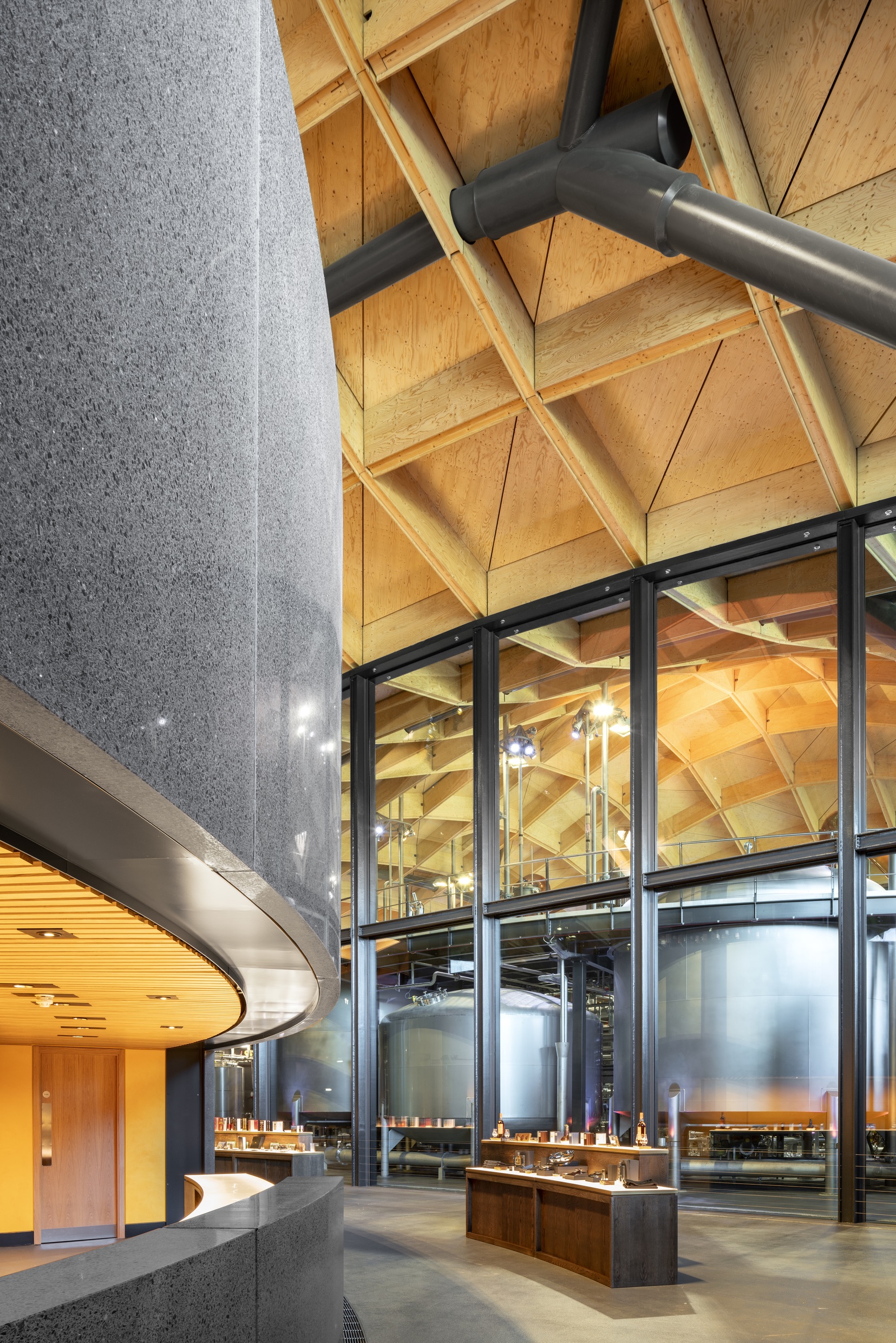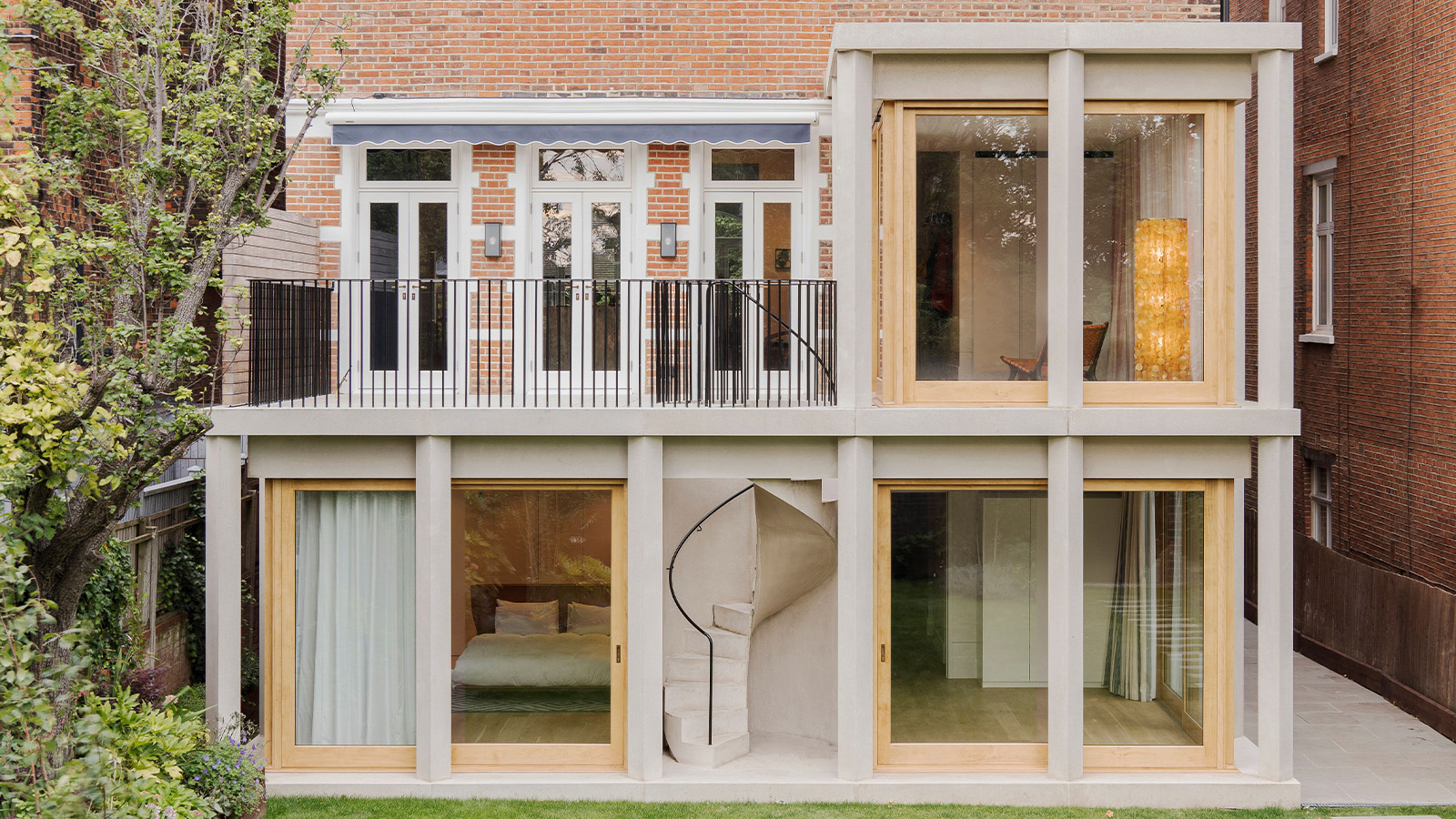How Rogers Stirk Harbour + Partners built The Macallan’s Speyside distillery
Look back at the journey behind the creation of the award-winning The Macallan Distillery in Scotland’s Speyside, by renowned architecture studio Rogers Stirk Harbour + Partners

Joas Souza - Photography
Back in the summer of 2012 The Macallan – makers of luxury single malt scotch whisky since 1824 – launched an international competition for the design of a new and architecturally audacious project. Incorporating a new factory, HQ and ‘Distillery Experience' for visitors, the proposed building was to be situated on an existing field within 485 acres of The Macallan Estate and the listed Jacobean manor, Easter Elchies House, aka The Macallan’s spiritual home.
The client set architects and engineers a rigorous brief for a design-focused brand home that would project the vision and direction of the leading single malt whisky marque into the future. With the barley field site of the new building at the edge of Scottish countryside designated as an ‘Area of Great Landscape Value’ – a land corridor following the sweep and contours of the River Spey integral to The Macallan Estate and The Macallan Fishing Beat – any competitive proposal would have to be brave, bold and audacious while remaining sensitive to the surrounding environment of ancient Scottish earthworks, long cairns, brochs and wells. The importance of the neighbouring ancestral house had to be respectfully acknowledged but the new distillery would also be required to increase The Macallan’s production of whisky by up to a third. Quite a challenge.

Enter Graham Stirk of Rogers Stirk Harbour + Partners, the London-based practice whose impressive portfolio includes One Hyde Park, the Leadenhall Building, NEO Bankside London and the Millennium Dome. Stirk provided a plan that mitigated the impact of the building; a response to the landscape as the primary context rather than the disparate nature of the existing built facilities and storage units.
But it was Rogers Stirk Harbour + Partners’ projected roof design that offered the most compelling prospect. Said to be one of the most complicated timber structures in the world – 1,800 single beams, 2,500 different roof elements, and 380,000 individual components, almost none of them the same – the undulating canopy would be a beautiful, meticulously engineered, wood and steel wonder.
‘Whilst the roof design is described as a landscape response, the roof was never intended to disappear or be lost within the hillside,' explains Toby Jeavons, Associate Partner and Project Architect at Rogers Stirk Harbour + Partners. ‘As such, the roof is positioned on top of the retaining structure and not bound by it. This allows the upstanding depth of the roof structure to act as a balustrade to the grid line and to the Northern edge of the roof as it appears to meet the ground. As the roof "sails" above the retaining structures, it is freed from restraining ground pressures and loads.'

Eventually completed back in 2018, the roof structure consists of two principal parts, the primary tubular steel support frame and the rolling domes and valleys of the timber grid shell. The primary steel frame is laced through the centre of the timber beam structure and helps to resist the torsional forces. The timber domes act in compression and the interconnecting valleys are hung between the domes. All the roof beams are straight and all the cassettes are flat, double-skinned panels.
‘This provides the facetted appearance so important for the "engineered landscape",' says Jeavons. ‘Despite the highly repetitive and rotational roof geometry, the finished structure is constructed from over 380,000 components. All of the timber beams are vertical and a constant expressed depth of 750mm which allows for considered and neat interfaces with internal partitions as well as the solid and glazed facades.'
Wallpaper* Newsletter
Receive our daily digest of inspiration, escapism and design stories from around the world direct to your inbox.
The changeable highland weather and uncompromising Scottish elements also proved a significant factor in the building’s material construction and profile. ‘The architectural concept of the distillery allows it to thrive in the Scottish elements by reflecting the very nature that surrounds it. The profile is low and hugs the ground. The roof structure anticipates severe snow loading, and the natural green roof coverings utilise a specific, low maintenance mix of Scottish wildflowers and meadow grasses suited to the location.'
To satisfy the proprietor’s desire for increased yield, practicality and an efficiently attractive, visitor-friendly space, the architects envisaged a facility that contained a rhythm of production ‘cells' which could be conceptually added or taken away to provide the required capacity.

‘A production cell is a combination of the required fermentation and distillation vessels which we have positioned in a circular arrangement. This is to increase the visibility of the beautiful production equipment. By situating the hand-made copper pot stills in an elevated central position the building celebrates the entire production sequence.'
‘The distinctive roof configuration is a reflection of the circular production cells beneath it and takes the form of a laminated veneered lumbar (LVL) orthogonal grid shell. The use of timber is in part a reflection of the particular importance that The Macallan place on wood during its whisky’s maturation process – a crucial factor which accounts for up to 80 per cent of the character of the single malt whisky. The roof undulates with equal rhythm over four process cells below and is then pulled higher to the South where the roof accentuates and highlights the Visitor Experience’s point of entry.'
For inspiration, Graham Stirk and his team examined historic plans for the original estate dating back to the early 18th century, notably a Thomas Whyte plan, which hangs in The Oak Hall in Easter Elchies House. This helped inform the setting of the building, in particular, the serpentine approach to the Visitor Experience entrance at the southern end of the facility.
‘It was always important to us that the two buildings were physically joined,' says Toby Jeavons. ‘The Experience is the reception – and not a separate area where one learns about the distilling process abstractly. It was important to deliver a clear view into beautifully co-ordinated production area. In this building, nothing is to be hidden away.'




INFORMATION
-
 Sotheby’s is auctioning a rare Frank Lloyd Wright lamp – and it could fetch $5 million
Sotheby’s is auctioning a rare Frank Lloyd Wright lamp – and it could fetch $5 millionThe architect's ‘Double-Pedestal’ lamp, which was designed for the Dana House in 1903, is hitting the auction block 13 May at Sotheby's.
By Anna Solomon
-
 Naoto Fukasawa sparks children’s imaginations with play sculptures
Naoto Fukasawa sparks children’s imaginations with play sculpturesThe Japanese designer creates an intuitive series of bold play sculptures, designed to spark children’s desire to play without thinking
By Danielle Demetriou
-
 Japan in Milan! See the highlights of Japanese design at Milan Design Week 2025
Japan in Milan! See the highlights of Japanese design at Milan Design Week 2025At Milan Design Week 2025 Japanese craftsmanship was a front runner with an array of projects in the spotlight. Here are some of our highlights
By Danielle Demetriou
-
 This 19th-century Hampstead house has a raw concrete staircase at its heart
This 19th-century Hampstead house has a raw concrete staircase at its heartThis Hampstead house, designed by Pinzauer and titled Maresfield Gardens, is a London home blending new design and traditional details
By Tianna Williams
-
 An octogenarian’s north London home is bold with utilitarian authenticity
An octogenarian’s north London home is bold with utilitarian authenticityWoodbury residence is a north London home by Of Architecture, inspired by 20th-century design and rooted in functionality
By Tianna Williams
-
 What is DeafSpace and how can it enhance architecture for everyone?
What is DeafSpace and how can it enhance architecture for everyone?DeafSpace learnings can help create profoundly sense-centric architecture; why shouldn't groundbreaking designs also be inclusive?
By Teshome Douglas-Campbell
-
 The dream of the flat-pack home continues with this elegant modular cabin design from Koto
The dream of the flat-pack home continues with this elegant modular cabin design from KotoThe Niwa modular cabin series by UK-based Koto architects offers a range of elegant retreats, designed for easy installation and a variety of uses
By Jonathan Bell
-
 Are Derwent London's new lounges the future of workspace?
Are Derwent London's new lounges the future of workspace?Property developer Derwent London’s new lounges – created for tenants of its offices – work harder to promote community and connection for their users
By Emily Wright
-
 Showing off its gargoyles and curves, The Gradel Quadrangles opens in Oxford
Showing off its gargoyles and curves, The Gradel Quadrangles opens in OxfordThe Gradel Quadrangles, designed by David Kohn Architects, brings a touch of playfulness to Oxford through a modern interpretation of historical architecture
By Shawn Adams
-
 A Norfolk bungalow has been transformed through a deft sculptural remodelling
A Norfolk bungalow has been transformed through a deft sculptural remodellingNorth Sea East Wood is the radical overhaul of a Norfolk bungalow, designed to open up the property to sea and garden views
By Jonathan Bell
-
 A new concrete extension opens up this Stoke Newington house to its garden
A new concrete extension opens up this Stoke Newington house to its gardenArchitects Bindloss Dawes' concrete extension has brought a considered material palette to this elegant Victorian family house
By Jonathan Bell